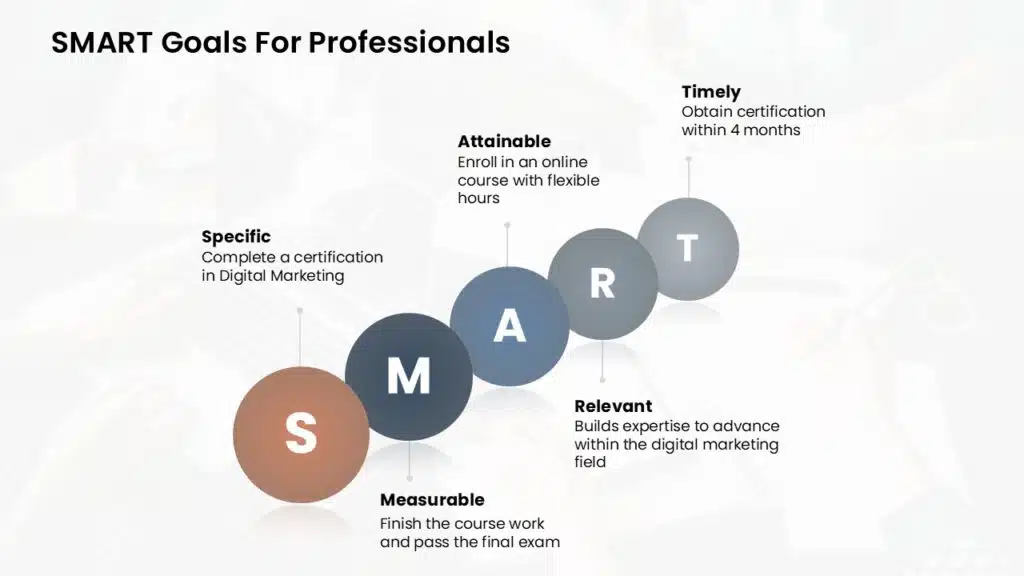How To Present An Action Plan?
When you have created an action plan to achieve your goals, you are all set with your detailed strategy and are ready to move forward! However, presenting this action plan to your team, investors, managers, etc., is one of the most crucial and initial steps in actually executing your action plan.
In this blog, we will learn how to exactly present your action plan; it will be more about planning a presentation about your action plan.
So that its essence and context are correctly conveyed, its relevance and strategy are clearly understood by your audience, and it prepares your team holistically to execute your action plan.
What Is An Action Plan?
In simple language, an action plan is a set of steps or tasks strategized to achieve a specific goal.
An action plan helps you plan how to achieve your goals for yourself or your business. To understand, what is the purpose of an action plan? its concept, and its design, you can go through ‘What is an action plan? it will help you understand how to create one, and the best practices.
An action plan has key elements, and if you get these right, you can write a rich and comprehensive action plan.
Key Elements Of An Action Plan

A good action plan has these key elements,
- Clear Objectives
- Actionable steps
- Timelines & Deadlines
- Assigned responsibilities or Task allocations
- Resources needed
- Risk and Challenges
- Success Metrics and Benchmarks
- Monitoring Reviews
To understand these key elements in detail, refer to ‘What is an action plan?’
How To Present Your Action Plan?
One needs to understand that there is a clear difference between creating an action plan and presenting one.
This difference lies in their different purposes. An action plan creates a clear strategy, sets tasks, plans for resources and risks, allocates responsibilities, sets deadlines and timeframes, and achieves a specific goal.
The purpose of presenting an action plan is to be more communicative. Its purpose is to explain the context, facts, and scenarios, establish the plan’s relevance, convey the goals and objectives clearly, educate your stakeholders about the strategy, and motivate your team to take the necessary steps.
The presenting part of an action plan is more about conveyance, setting the context, and preparing and training your teams to act!
Steps To Present An Action Plan?
- Set The Context & Relevance
This establishes why your action plan matters and captures immediate attention.
Talk about case studies done and their inferences; you can use mind maps, flow charts, or contextual slides.
- Explain Objectives Clearly
This helps ensure that your audience clearly understands what needs to be achieved, the purpose, and the expected outcome. You can use SMART goal templates, OKRs, etc.

- Use A Structured Format
This helps you to make your plan logical, and easy to flow and improves understanding. You can use Gannt charts or roadmaps.

- Leverage Visual Aids
This is probably the most overlooked step, but using graphics and infographics to convey your data can break down complex stats for better comprehension. You can use charts, graphs, etc.
This step concerns the presenter. You can use a storytelling approach, use a lot of statistics, and try to keep the audience hooked.
- Talk About Resource Management
Talking about resource management shows preparedness and the efficiency of your planning; you can use a resource allocation matrix and budget trackers.
- Present Task Allocation Clearly
You can use a task responsibility matrix or tables to help clarify individuals’ responsibilities and avoid confusion.
- Forecast Challenges & Talk About Risk Management
Talking about challenges and risks and how you plan to handle them builds credibility, makes your delivery impactful, and actually prepares our team for them. You can use SWOT analysis or risk management charts.

- Speak With Confidence And Clarity
This, too, is very underrated and yet one of the most important steps. It helps you make your delivery impactful. You can use sophisticated, ready-to-use PowerPoint templates rich with infographics or modern add-ons.
- Make It Interactive, Involve Your Audience
Making your presentation interactive encourages your audience to participate, which is crucial, especially while presenting your action plan.
Try using polls or Q&A sessions to get your audience involved.
- Highlight Key Details Of Your Strategy
Though this goes without saying, highlighting the most crucial parts of your overall strategy helps you draw attention to what matters most. You can highlight them in text or use callout boxes.
- Present Metrics To Be Achieved
Presenting metrics helps quantify success and measure progress; you should use graphs, dashboard KPI trackers, etc.
- Summarize Your Action Plan
A good presentation should have a summary or conclusion, which helps your audience retain and reinforces understanding. Your country using summary slides or simple bullet point summaries.
A Few Examples Of Action Plan Templates
How to present an action plan in PowerPoint?
Here are some meticulously designed action plan templates to help you present an action plan correctly with the ease of simple editing.
Just input your data and watch these templates upgrade your action plan communication with elements such as high-end infographics, sophisticated dashboards, and more.



The Bottom Line
An action plan can reduce your effort by leading you and your team to success. Once developed, action plans track tasks independently while guiding the team through every challenge and holding them accountable. In summary, an action plan is a great way to strategize your steps and tasks for achieving a goal, and presenting one is equally vital.
Remember that the main goal of your action plan presentation is conveyance. It’s about helping your team understand your goal and strategy and how to achieve each task to ensure the plan’s ultimate success.
Just remember to present your action plan confidently and in context, keeping in mind to address the important highlights, use infographics, etc, and Keep it interactive.
So, next time you prepare to present an action plan, you are all set! Present your action plan to inform, involve, inspire, and lead your team into the actual execution of your action plan.
FAQs
-
What is the main purpose of an action plan presentation?
The main purpose of an action plan presentation is to convey the entire concept, strategy, and how each step of the action plan is going to be executed.
It is used to inform, educate, and inspire your team or stakeholders, to take the actions required to achieve the goals specified by your Action plans.
-
How to make an action plan presentataion engaging?
To make an action plan engaging, there are many ways, to begin with, you can
- Use Infographics
- Use roadmaps and timelines
- Use Charts or dashboards.
- Use unique and relevant PowerPoint templates that suit your niche.
- Use SWOT analysis etc
- Speak confidently and try to engage your audience through polls, Q&As etc.
-
Why is it important to forecast challenges in your action plan?
Forecasting challenges is one of the most important steps in both creating an action plan and presenting one, this helps you prepare for the unseen, it improves your risk planning and resources management.
-
How are templates useful in presenting an action plan in PowerPoint?
Ready-to-use action plan templates are bliss when it comes to presenting action plans.
They simplify the process with pre-designed layouts and structures, save time, and help organize information effectively.
Using customizable templates helps you to tailor your presentation to fit your audience and niche.














